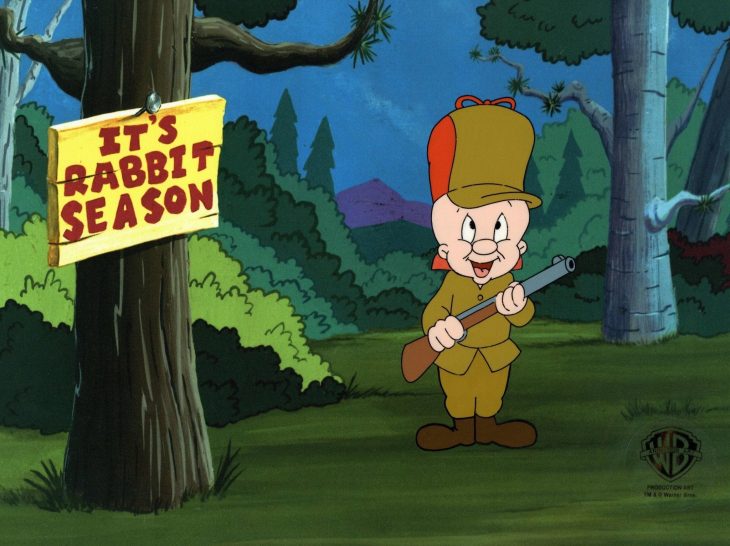
Word of the Day: Farraginous
Today’s word of the day, courtesy of Words Coach (https://www.wordscoach.com/dictionary), is farraginous. Pronounced / fəˈrædʒ ə nəs /, with the stress on the second syllable, farraginous is an adjective meaning “consisting of a farrago or mixture; heterogeneous; mixed” (https://www.dictionary.com/browse/farraginous). Of course, we all love those circular definitions in which the definition takes you to just a different form of the word. In this case, a farrago is “a confused mixture; hodgepodge; medley” (https://www.dictionary.com/browse/farrago).
Etymonline.com does not have an entry for farraginous, but it does for farrago, saying that it appears in the language in the “1630s, from Latin farrago ‘medley, mixed fodder, mix of grains for animal feed,’ from far ‘grain’ (see farina)” (https://www.etymonline.com/search?q=farrago). Farina appears in the language in “1707, ‘dust, powdery substance,’ from Latin farina ‘ground wheat, flour, meal,’ from far (genitive farris) ‘husked wheat, emmer; grain, flour,’ from Proto-Italic *fars ‘flour,’ from PIE *bhars-, with cognates in Old Irish bairgen ‘bread, loaf,’ Welsh bara ‘bread,’ Serbo-Croatian brašno ‘flour, food,’ Latvian bariba ‘food,’ Gothic barizeins ‘from barley,’ Old Norse barr ‘grain,’ Old English bere ‘barley;’ according to de Vaan perhaps a loan-word from a non-IE language” (https://www.etymonline.com/word/farina). Also, when I was a kid growing up in eastern Pennsylvania, my mother regularly served us Farina for breakfast: “Farina is a form of milled wheat popular in the United States. It is often cooked as a hot breakfast cereal, or porridge…. Farina is milled from hard red wheat (spring or winter variants)” (https://en.wikipedia.org/wiki/Farina_(food)). My recollection may be faulty, but I believe I much preferred oatmeal and Cream of Wheat, by a long, long shot.
So we went from having a noun farrago referring to a “mix of grains for animal feed” to the adjective farraginous meaning “Formed of different materials,” as Samuel Johnson defines in his 1755 Dictionary. As a source (Johnson’s Dictionary is often credited as the first English dictionary founded upon historical examples, in much the same way that the Oxford English Dictionary would be over 100 years later), Johnson provides this quotation: “Being a confusion of knaves and fools, and a farraginous concurrence of all conditions, tempers, sexes and ages, it is but natural if their determinations be monstrous, and many ways inconsistent with truth. Brown’s Vulgar Errours” (https://johnsonsdictionaryonline.com/views/search.php?term=farraginous). I feel certain that my “knaves and fools” Brown is not referring to any kind of grain.
Merriam-Webster contributes this: “In the 1600s, English speakers began using farrago as a noun meaning ‘hodgepodge’ and farraginous as an adjective meaning ‘consisting of a mixture.’ The creation of the adjective was simply a matter of adding the adjectival suffix -ous to farragin– (although at least one writer had previously experimented with farraginary, employing a different adjectival suffix)” (https://www.merriam-webster.com/dictionary/farraginous). I think I like farraginary; I know I like it more than I like Farina.
On this date in 1937, according to On This Day, “Elmer Fudd, originally Egghead, is a Warner Bros. cartoon character created by Tex Avery and Chuck Jones for the Looney Tunes and Merrie Melodies series, first debuting as Egghead in ‘Egghead Rides Again’” (https://www.onthisday.com/events/july/17).
Well, it may not be that simple.
It is true that Egghead appeared for the first time on July 17, 1937. According to Wikipedia, “Egghead initially was depicted as having a bulbous nose, a voice like Joe Penner (provided by radio mimic Danny Webb) and an egg-shaped head. Many cartoon historians believe that Egghead evolved into Elmer over a period of a couple of years. However, animation historian Michael Barrier asserts that ‘Elmer Fudd was not a modified version of his fellow Warner Bros. character Egghead’ and ‘the two characters were always distinct. That was evidenced by Elmer’s early prototype being identified in a Warner publicity sheet for Cinderella Meets Fella (filed with the Library of Congress as a copyright description) as “Egghead’s brother”’” (https://en.wikipedia.org/wiki/Elmer_Fudd).
Elmer Fudd became a popular cartoon character for Warner Brothers. He was briefly voiced by the famous Mel Blanc, and then by Danny Webb, and then for about 20 years by Arthur Q. Bryan, who was famous for his role on the radio show Fibber McGee and Molly. Then, in 1960, after Bryan’s death, Mel Blanc took over the role again.
Elmer Fudd was a failure. He was usually portrayed as a hunter, trying to bag either Bugs Bunny or Daffy Duck, but he never succeeded.
One of Elmer Fudd’s most notable characteristics was his speech: “He exhibits the speech sound disorder known as rhotacism, replacing his Rs and Ls with Ws thus referring to Bugs Bunny as a ‘scwewy’ (screwy) or ‘wascawwy (rascally) wabbit.’ Elmer’s signature catchphrase is, ‘Shhh. Be vewy, vewy quiet, I’m hunting wabbits’, as well as his trademark laugh” (ibid.).
When I was a kid, we got to watch cartoons on Saturday mornings only. There was no Cartoon Network or Nickelodeon. We had the three major networks on VHF and PBS on the UHF, and maybe one other network out of Philadelphia. So on Saturday mornings my brothers and I got to watch the Saturday morning cartoons. Looney Tunes. Merrie Melodies. Fractured Fairy Tales. Bugs Bunny. We loved those shows. What farraginous entertainment!
Today’s image is of Elmer Fudd, of course (https://ar.inspiredpencil.com/pictures-2023/elmer-fudd-and-bugs-bunny-rabbit-season).